Recently, Microchip held an interesting course named “Inter-Processor Connectivity for Future Centralized Vehicle Computer Platforms”, which provided us with a clear demonstration of the next-generation automotive bus architecture.
At the Guangzhou Auto Show this time, the engineers from XPeng Motors mentioned that they have already iterated to EEA3.0, which is surprising, indicating that the architecture I had evaluated for 2024-2025 (XPeng has already implemented) should be questioned.
Regardless, I believe that the next-generation architecture will mainly involve the following features:
● Zonal ECUs with centralized compute platform
● IP-based, Ethernet IVN
● Software-oriented architecture
Interestingly, Microchip made the following figure focusing on high-resolution cameras, without 4D millimeter wave and lidar.
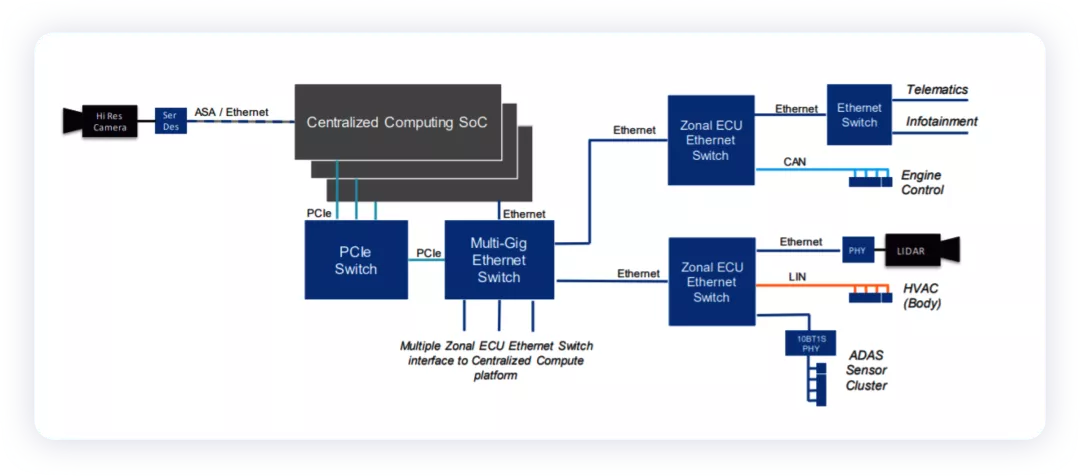
Ethernet Application
From the perspective of evolution speed, we can regard all non-standard controllers for Ethernet connected vehicles as Zonal ECUs, since these controllers can integrate many functions differently during standardization.
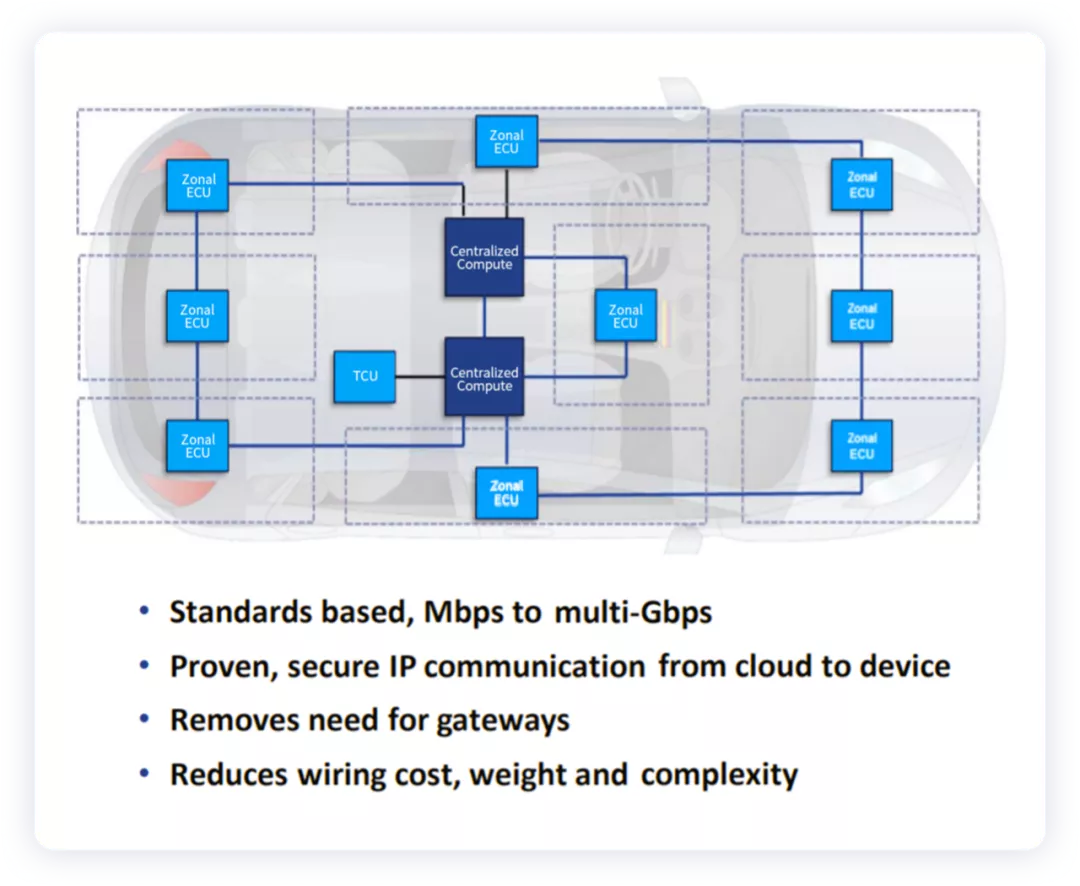
● Millimeter wave and lidar raw data, the former with 8T8R can achieve bandwidth demand over 10G, currently also requiring 3~G, while the latter is slightly smaller.
● Cameras, applying high-definition cameras, and A/V information flows, in a broad sense.
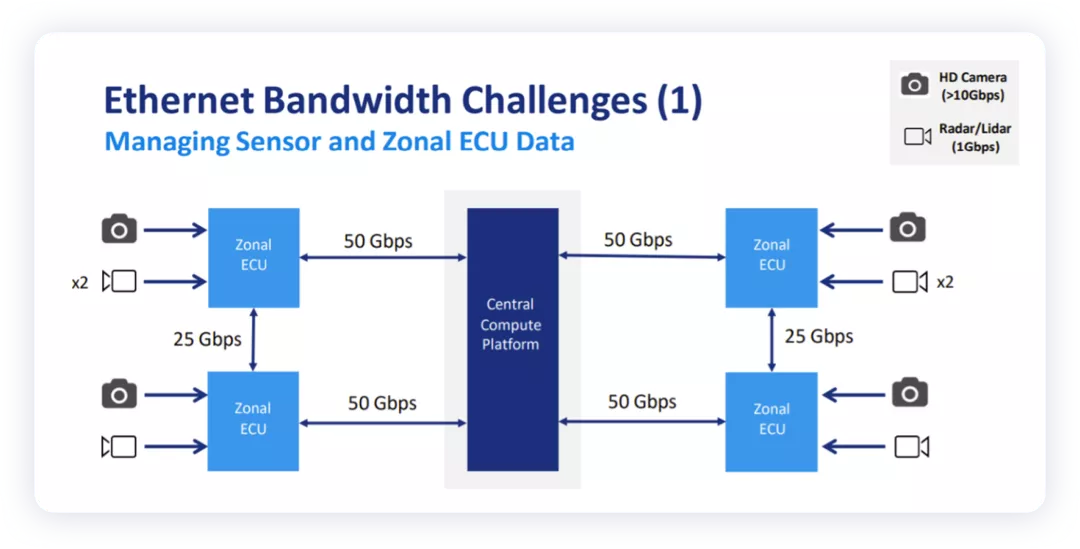
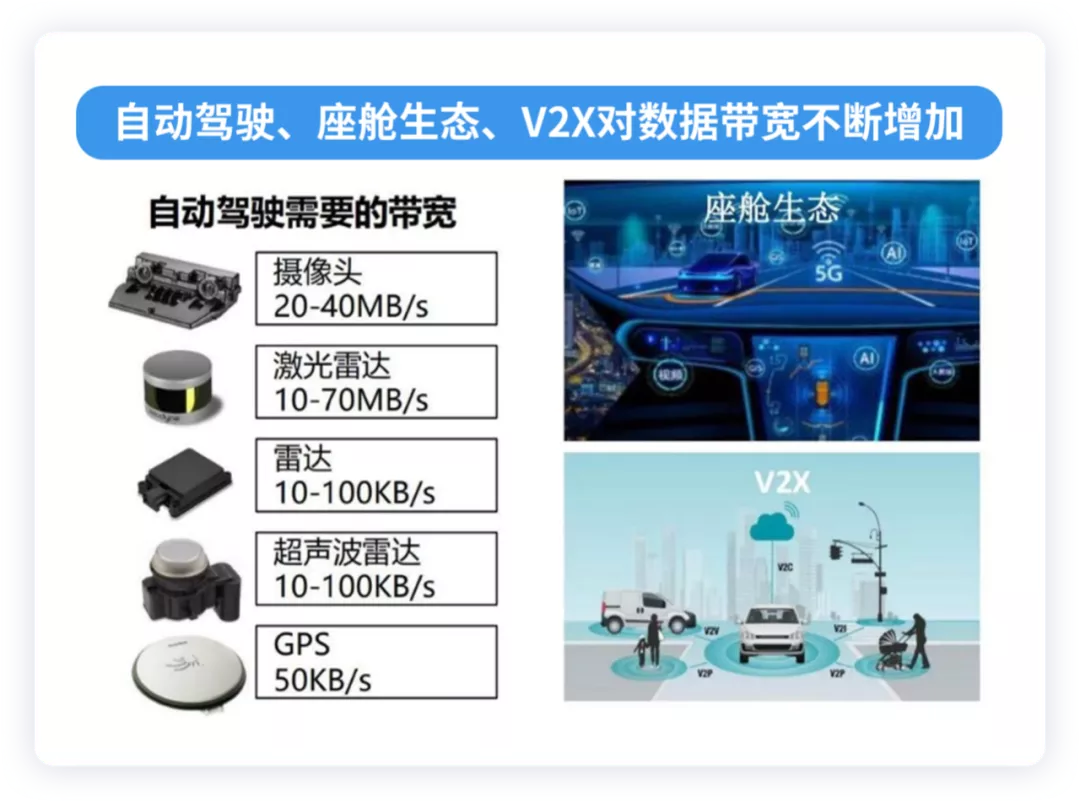 This much data input to the core platform, which is the central computing hub, requires the ability to handle up to 200Gbps of data transfer. Additionally, there must be data interchange between the compute centers 1 and 2, which have been configured with hot backups. Therefore, in line with modern trends and supercomputing knowledge, Ethernet technology is no longer viable for vehicle usage.
This much data input to the core platform, which is the central computing hub, requires the ability to handle up to 200Gbps of data transfer. Additionally, there must be data interchange between the compute centers 1 and 2, which have been configured with hot backups. Therefore, in line with modern trends and supercomputing knowledge, Ethernet technology is no longer viable for vehicle usage.
Communication Interface of the Computing Platform
PCIe® is the solution to meet the high bandwidth and ultra-low latency computing demands of the next-generation centralized vehicle architecture, and is currently the main research direction.
We find that it also satisfies the performance requirements of industrial data centers, such as high bandwidth and ultra-low latency, so it is feasible to apply it in the automobile industry as well.
Note: TI, Rosenberger, and GG Group have already begun to draft PCIe specifications for automobile cable channels, and more and more suppliers are entering this field.
PCIe E is an industry-standard high-performance universal serial I/O chip-to-chip and board-to-board interconnect, which uses an economical and efficient low-pin-count interface to achieve maximum bandwidth per pin.
The advantages mainly include:
1) High-bandwidth point-to-point interconnection:
When the transmission rate is 8GHz, I/O bandwidth can be expanded to 64Gbps.
2) Expandable bandwidth:
Supports multiple interconnect widths from 1-32PCI Express channels.
3) Supports advanced functionality:
Power management, hot swapping and insertion, data integrity, advanced error recording and reporting.
It should be noted that careful consideration of the entire physical interconnect is required when implementing PCIe through a vehicle channel. The complete end-to-end channel consists of two PCB channels at both ends of the automotive cable channel, including the portion from the TX/RX PHY to the corresponding PCB connector.
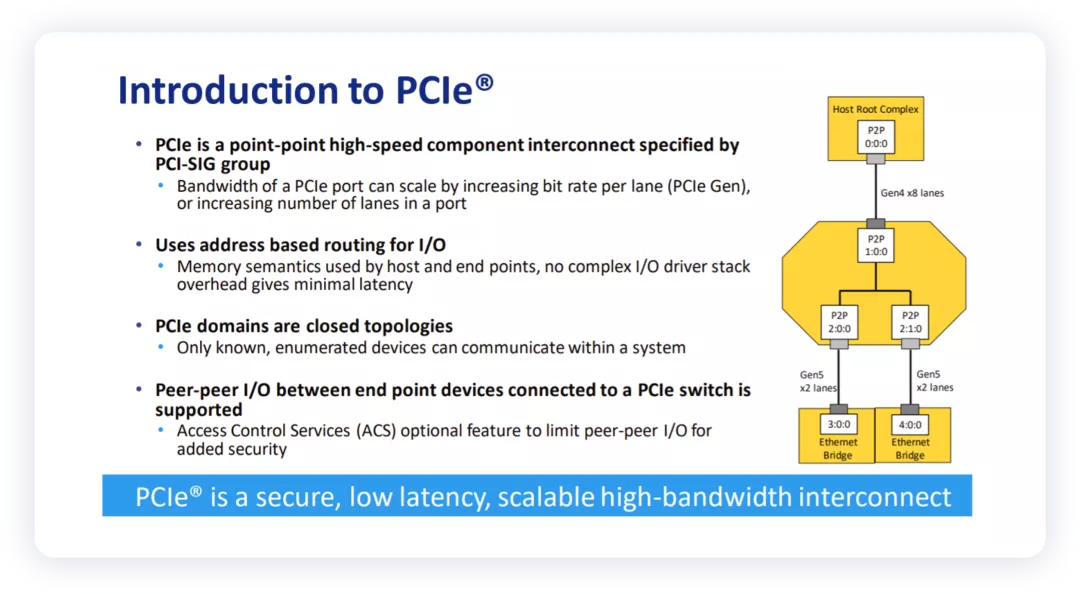
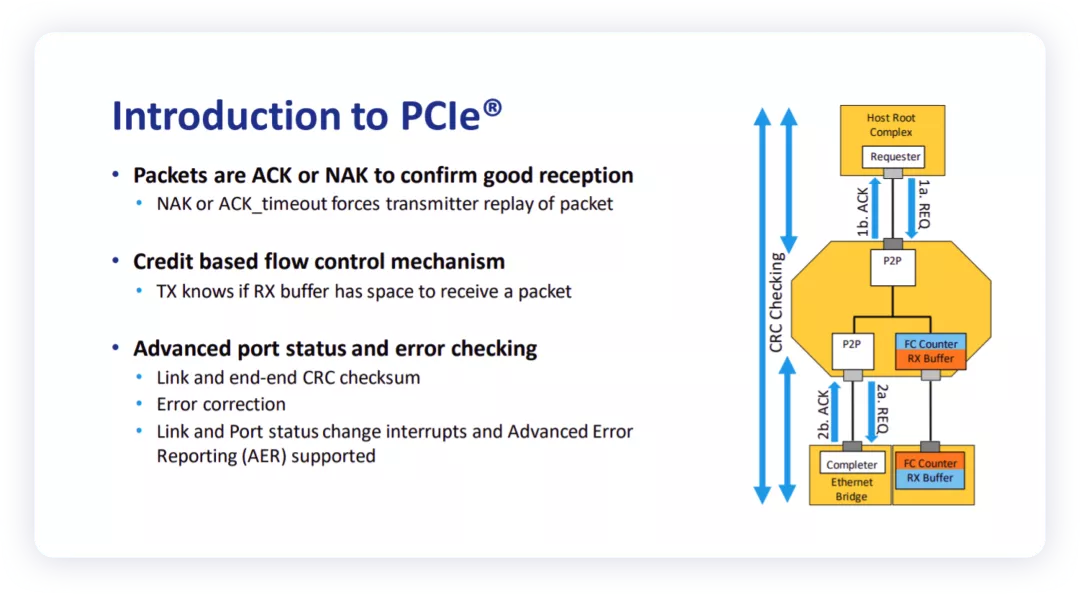
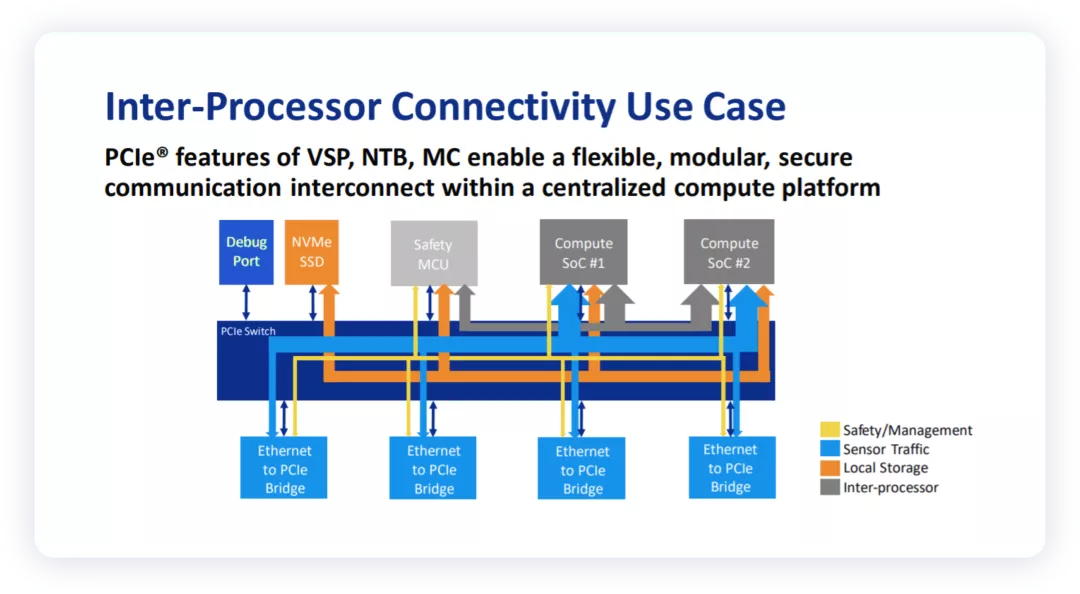 “`markdown
“`markdown
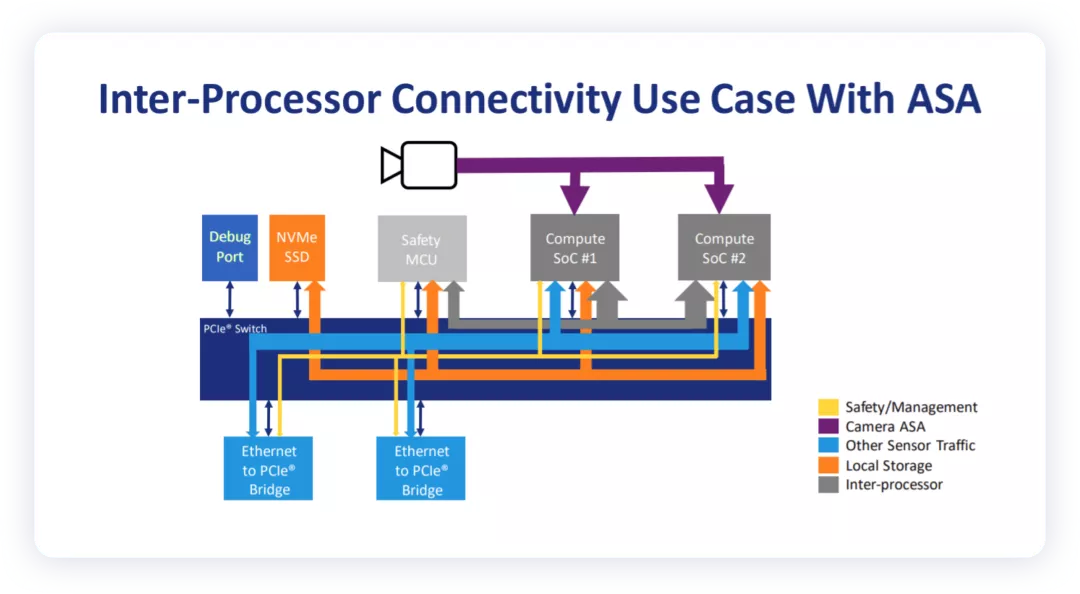
In summary, objectively speaking, the clear boundary between consumer electronics and automotive electronics in the era of Bill Gates’ PC has been completely broken. Nowadays, traditional automotive electronics are like being attacked in a low-dimensional space, and the main targets of attack come from the industrial electronics of smartphones and supercomputers, which is difficult to resist.
“`
This article is a translation by ChatGPT of a Chinese report from 42HOW. If you have any questions about it, please email bd@42how.com.